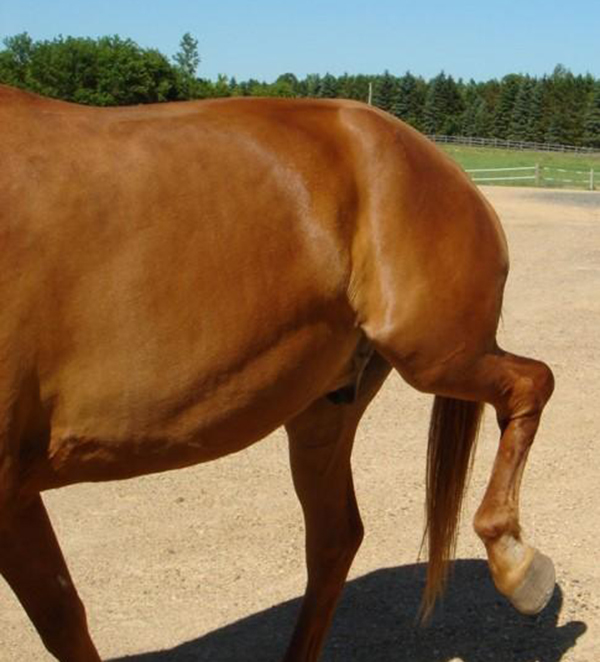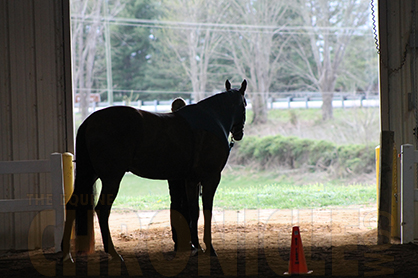Checking Under the Hood- Role of Neurological Evaluations in Pre-Purchase Examinations
UC Davis Veterinary Medicine, The Horse Report
By: Amy Young
Buying a horse can be a lot like buying a car; both are significant investments. Regardless of the sticker price, it’s a good idea to take a peek under the hood before you drive off the lot. A pre-purchase examination (PPE, or “vet check”) can be minimal or extensive, but it should always include a neurological evaluation.
Pre-purchase Exam: What It Is and What It’s Not
A pre-purchase examination is an assessment of a horse by a veterinarian and is usually requested by the potential buyer prior to purchase. The exam is intended to help the buyer make an informed decision based on their specific situation, needs, and expectations by evaluating a variety of parameters and potentially uncovering pre-existing conditions and warning signs of any potential problems.
The thoroughness of the pre-purchase examination varies and typically depends on several factors, including the age and breed of the horse, its performance and veterinary history, purchase price, and the buyer’s expectations for the horse’s intended use, among other considerations. Data from the exam can also be used for comparison to aid in diagnosis should issues arise in the future.
The veterinarian’s role is to objectively provide information about the horse. The ultimate decision to purchase or pass lies with the buyer and is based on the levels of risk and potential management that they are comfortable accepting.
Contrary to popular belief, a pre-purchase examination is not a pass or fail test, nor a guarantee of health, soundness, performance, or longevity. It is important to recognize that there are limits to what can be determined by examination, and acknowledge that a pre-purchase examination represents a snapshot of the horse at a particular moment in time.

A horse with Shivers exhibiting hyperextension of a hind limb while backing. Photo courtesy of Dr. Stephanie Valberg.
Backing it Up
An important part of the neurological exam is backing the horse. Horses naturally back in a two beat gait, similar to a trot in reverse. For example, the right front moves with the left hind, and the left front moves with the right hind. Neurological impairments can interfere with this gaitAscending/descending a hill or step
The classic example is the neuromuscular disease Shivers, which is characterized by an abnormal gait when backing up. Affected horses typically exhibit hyperflexion (hindlimb is held up and away from the body and often trembles) or hyperextension (feet are placed further back than normal) of the hind limbs when backing.
Horses that are more severely affected and/or showed clinical signs of Shivers at an early age may experience decreased performance over time. It can become increasingly challenging to perform farrier work on affected horses, which may have implications for hoof health and soundness.
Neurological Evaluation
Most horse owners are aware of physical examinations, lameness evaluations, and joint flexion tests as components of a pre-purchase exam. Since neurological conditions can ultimately present safety issues for horses and handlers, a neurological evaluation should also be included. Whereas minor findings on a lameness exam in an older horse can be managed, for example, findings on a neurological exam have significant implications.
Some specific tests and findings that a veterinarian will look for during a neurological examination include:
- Circles/serpentines – The horse may exhibit circumduction (swinging the outside hind leg out from the body) or interference (stepping on itself) while walking, both of which are indicative of ataxia.
- Ascending/descending a hill or step – The horse may consistently stab their toes into the hill (ascending) and buckle their hindlimbs (descending) while making repeated mistakes in foot placement on the curb, all indicative of ataxia.
- Walking with the head elevated – An ataxic horse will demonstrate an exaggerated gait with the front limbs (i.e. “floaty”) while walking. Another possible finding is that a non-gaited horse that is neurologically abnormal may start pacing.
- Backing – Horses with cervical vertebral compressive myopathy (CVCM) may drag their front legs while backing, whereas horses with shivers may demonstrate hyperflexion or hyperextension only when backing.
- Tail pull – Weakness associated with neuromuscular disease can become evident if the horse has trouble maintaining its balance during this part of the examination.
Additional testing and diagnostics may be recommended by the veterinarian to further explore any findings.
Although there is no way to predict future issues or eliminate all risks, a pre-purchase examination can help the buyer make an informed decision and keep things running smoothly.
Reprint provided with permission.











